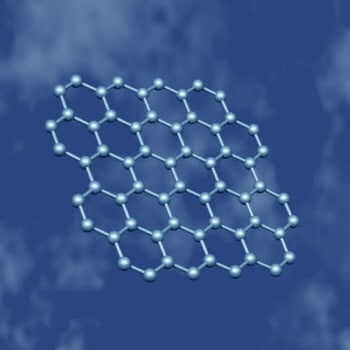Physicists in the UK and Russia have shown that films of carbon only one atom thick might have useful electronic properties. The graphene films prepared by Andre Geim and co-workers at Manchester University and the Institute for Microelectronics Technology in Chernogolovka can be processed to make transistors and may eventually offer an alternative to silicon for some semiconductor applications (K S Novoselov et al. 2004 Science 306 666).

Geim and colleagues made the films by mechanically peeling layers of graphene — two-dimensional sheets of carbon atoms — from the surface of a thick crystal of graphite, and then used a combination of optical, electron-beam and atomic-force microscopy to separate out the thinnest films. This allowed them to produce films that measured tens of microns across but were only a few nanometres thick.
Using standard lithography and etching techniques, the UK-Russia team then processed the films to make field-effect transistors. Electrons in the device were able to travel ballistically — that is, without being scattered — from the source to the drain electrode at room temperature.
“The ballistic transistor is a holy grail for electronic engineers because it is very very fast,” says Geim. “Graphene shows ballistic electronic transport at submicron distances, which is more than enough to make ballistic transistors.” Although the team has not demonstrated that its transistors are fast, they have shown that they are ballistic.
Inspired by recent breakthroughs made with carbon nanotubes — which can be considered as rolled up graphene sheets — the team is now exploring other possible applications for the films, including ultrasensitive gas sensors. “Graphene is a truly wonderful material,” says Geim.



